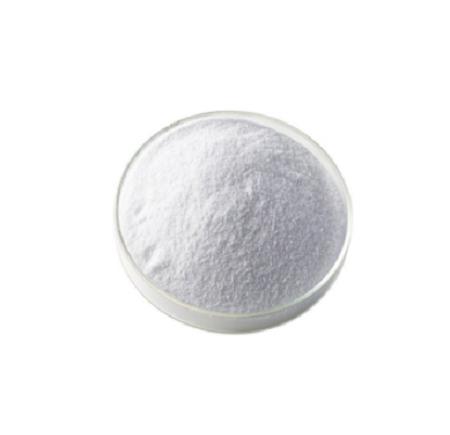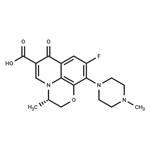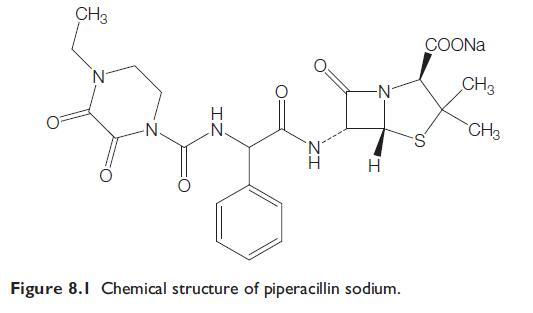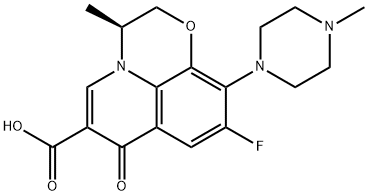Toxicity of Levofloxacin
Mar 15,2022
Levofloxacin (Levaquins, Iquixs, Quixins) is a fluoroquinolone that is the optical S-(-) isomer of ofloxacin. It was originally developed by Daiichi Seiyaku Pharmaceutical Co. Ltd, in Japan. Its chemical formula is (-)-(S)-9-fluoro-2,3-dihydro-3-methyl-10-(4-methyl-1- piperazinyl)-7-oxo-7H-pyrido[1,2,3-de] [1,4]benzoxazine-6-carboxylic acid hemihydrate, and it has a molecular weight of 370 daltons.

Mechanism of action
Levofloxacin, like other fluoroquinolones, interacts with the complexes of both DNA gyrase and DNA topoisomerase IV with DNA. Drug binding is thought to occur in the QRDR domain of the enzymes, which is near the active site of enzyme action, but no crystallographic structure of an enzyme–DNA complex with any quinolone has been solved to provide direct evidence for drug localization within the complex. Both enzymes are essential for DNA replication, and interaction of a quinolone with either enzyme–DNA complex traps the enzyme on DNA and creates a cleavable complex, which blocks bacterial DNA replication and can, under some conditions, generate double-strand breaks in DNA that are likely necessary for bactericidal activity. For E. coli, levofloxacin has greater activity against DNA gyrase than against topoisomerase IV.
In contrast, for S. aureus levofloxacin has greater activity against topoisomerase IV than against gyrase. Most bacterial species have both quinolone target enzymes, but some species, such as M. tuberculosis, Helicobacter pylori, and Treponema pallidum, have only DNA gyrase. Levofloxacin has bactericidal activity against susceptible organisms but the additional factors after interaction of the drug with its target enzymes and the formation of potential DNA breaks that determine bacterial lethality are little understood.
Toxicity
The overall adverse effect rates for levofloxacin have ranged from 2.0% to 9.9%, with a drug discontinuation rate of around 3–4% in the US population. It is known that the rates of adverse effects vary in different patient populations, and in most cases adverse effects of levofloxacin and other quinolones have been studied in various patient populations, thereby not often allowing direct comparisons.
Neurological side-effects
The next most common category of adverse effects has been related to the central nervous system (CNS), with stimulatory effects such as insomnia, dizziness, and headache reported most often. Rates have been low overall for levofloxacin (0.2–1.1%), although, as with other quinolones, there have been case reports of rare patients with serious CNS adverse events such as seizures, psychosis, or delirium occurring while taking levofloxacin.The contribution of levofloxacin to these reactions is usually difficult to assess, but a prior history of seizures or electrolyte imbalance may increase the risk. The CNS effects of quinolones are thought to relate to their ability to displace the inhibitory neurotransmitter, g-aminobutyric acid (GABA), from its receptors. In in vitro and animal models ofloxacin has less eliptogenic potential than ciprofloxacin and levofloxacin less than ofloxacin.
- Related articles
- Related Qustion
- What is levofloxacin used for? Aug 16, 2024
Levofloxacin is effective in the treatment of a variety of infectious diseases.
Mezlocillin and Azlocillin are described together because they are often referred to as ‘‘newer antipseudomonal penicillins.’’ They are all vulnerable to the action of many beta-lactamases.....
Mar 15,2022APIIsepamicin is inactivated less than gentamicin by high concentration of various penicillins and beta-lactamase inhibitors.....
Mar 15,2022APILevofloxacin
100986-85-4You may like
- Levofloxacin hydrochloride
-

- 2025-12-06
- CAS:100986-85-4
- Min. Order:
- Purity: 0.99
- Supply Ability:
- Levofloxacin hydrochloride
-

- $0.00 / 1Kg/Bag
- 2025-12-05
- CAS:100986-85-4
- Min. Order: 1KG
- Purity: 98%-102%
- Supply Ability: 5 tons
- Levofloxacin
-

- $48.00 / 100mg
- 2025-12-05
- CAS:100986-85-4
- Min. Order:
- Purity: 99.80%
- Supply Ability: 10g





